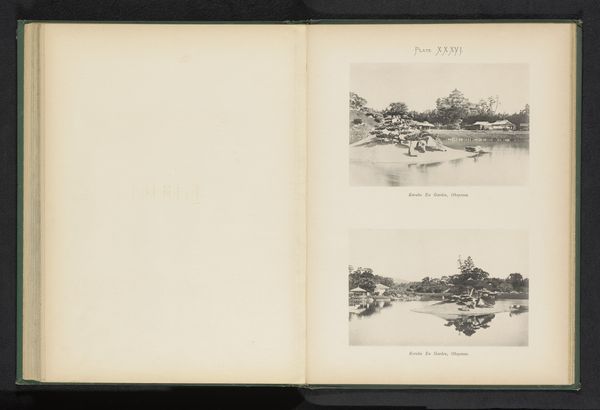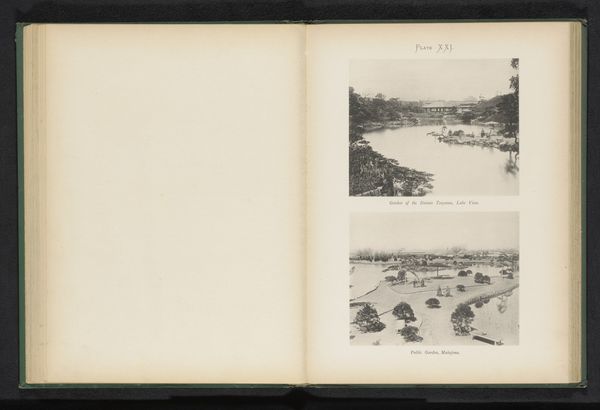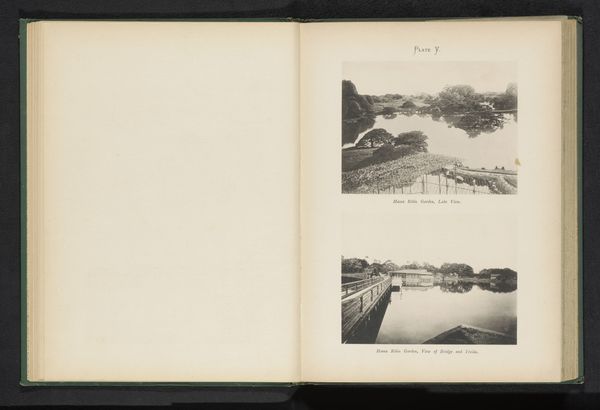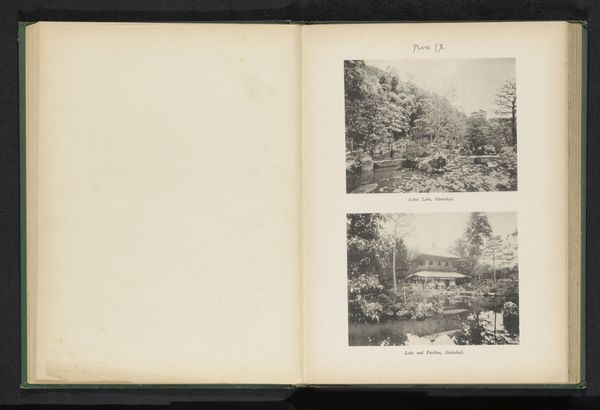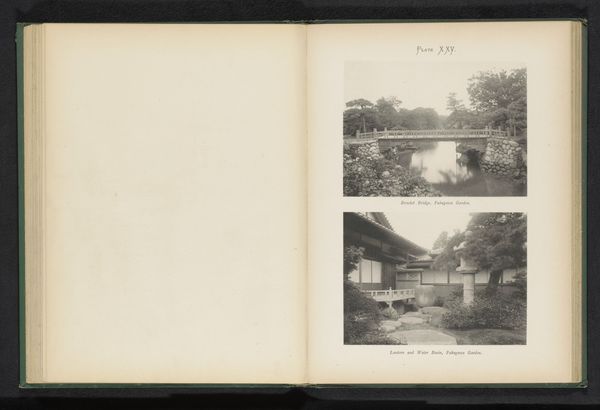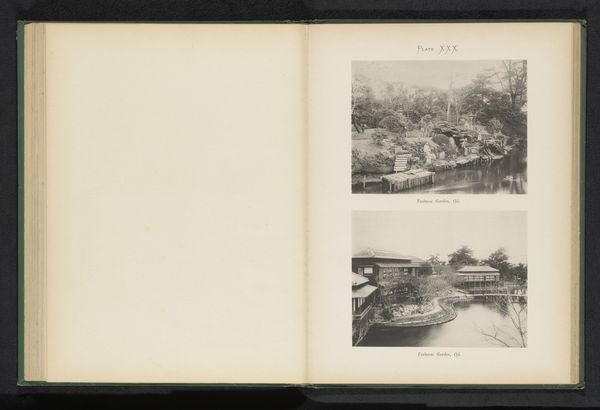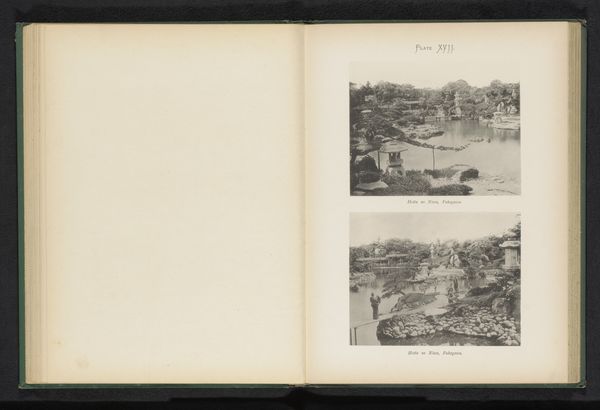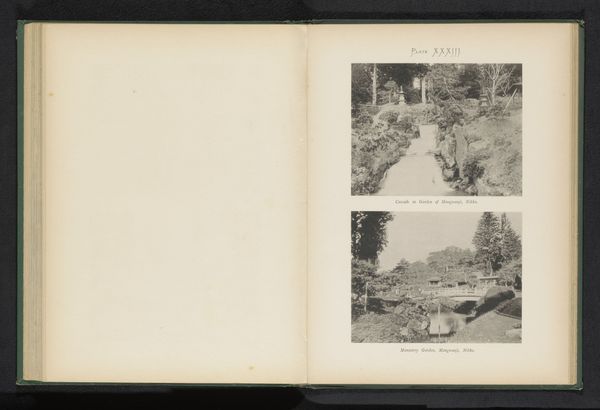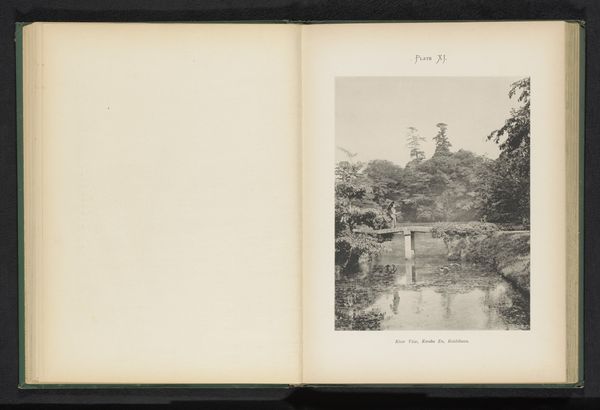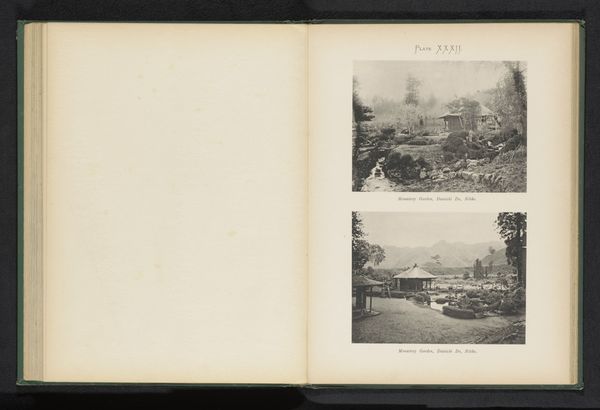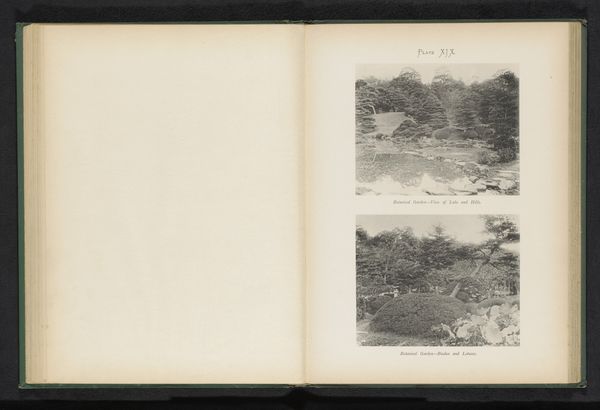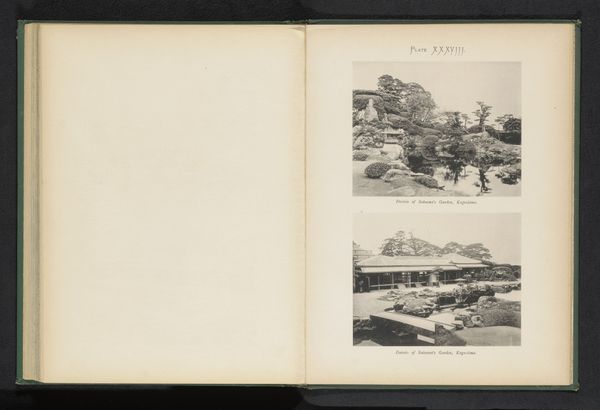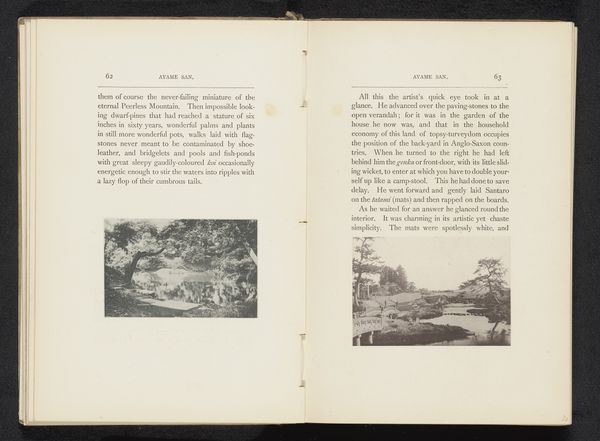
photography, gelatin-silver-print
#
landscape
#
photography
#
gelatin-silver-print
Dimensions: height 356 mm, width 258 mm
Copyright: Rijks Museum: Open Domain
Curator: Here we have a photo by Kazumasa Ogawa, taken sometime before 1893. It is titled "Two views of the gardens of Daimio Tsuyama in Tokyo, Japan.” It shows a page from a bound album featuring two black and white photographs of Japanese gardens. Editor: I find the atmosphere of these images very evocative. They feel both tranquil and a little melancholic, perhaps due to the monochrome and the soft focus. There's something timeless about them. Curator: Ogawa was a pioneer of photography in Japan, using collodion printing. His works provide significant insight into how Japan presented itself to the world in the late 19th century. What stands out to you about the subject matter? Editor: I think the conscious cultivation of nature on display is significant. Japanese gardens have a history reflecting class structure and spirituality. These Daimio gardens would have been spaces of leisure and reflection for the feudal lords, separate from the lives of ordinary people. There is an inherent hierarchy built into the visual representation of land ownership. Curator: Exactly. Notice the specific visual vocabulary. Elements such as carefully placed stones, meticulously shaped trees, and strategically positioned bodies of water aren’t merely decorative; they serve as cultural markers. Each object, each scene holds deeper symbolic meanings tied to Japanese aesthetics. Editor: Absolutely. Also consider Japonisme—the influence of Japanese art and design on Western art. This image plays into and arguably shapes perceptions of Japanese culture at the time, often catering to Western tastes, and framing Japanese culture through a very specific, possibly exoticised, lens. These were designed as documents of a nation encountering modernity and attempting to create its identity in the Meiji era. Curator: It shows a Japan crafting its narrative, aware of its global audience. Even something seemingly as simple as a garden view speaks to profound historical, social and cultural processes. Editor: Examining images like this allows us to dissect how cultural identities were constructed and disseminated during periods of significant historical transition. I see a beautiful, peaceful scene – that must be read through complex layers. Curator: Indeed. Photography isn't a passive recorder. Ogawa's compositions speak of cultural exchanges and how images actively participate in forging our understanding of civilizations. Editor: Ultimately, these "two views" offer much more than just surface level visual data, but can invite complex reflection of identity, perspective, and historical representation.
Comments
No comments
Be the first to comment and join the conversation on the ultimate creative platform.
